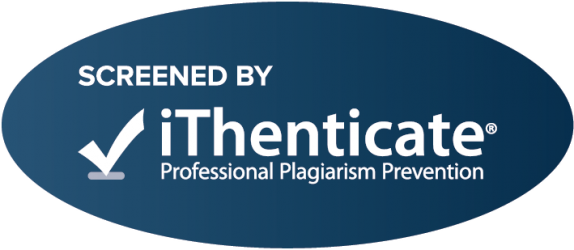Yoga Learning and Practice: Perception by Athletes Participating in Competitive Sport
Keywords:
yoga, perception, athleteAbstract
One of the significant influences on intrinsic motivation of the learner's continued practice of an activity, is, the learner's perception about the activity. The purpose of this study is to examine the perception of 'yoga' activity by male and female athletes participating in different competitive sports during varied level of competitions. Studies about athlete perception towards yoga and their motivation to learn and practice yoga is limited. This study is important since yoga postures (asanas) and regulated breathing (pranayama) could be applied as one of the self-care methods along with the sport fitness and recovery training for overall sport wellbeing including prevention and effective management of sport injuries.Downloads
References
Allen, M.S., & Laborde, S. (2014). The Role of Personality in Sport and Physical Activity. Association of Psychological Science. Current Directions in Psychological Science, Vol. 23(6) 460–465.
Kolb, Alice Y., & Kolb, David, A. (2005). Learning Styles and Learning Spaces: Enhancing Experiential Learning in Higher Education. Academy of Management Learning & Education June 1, 2005 4:2 193-212.
Birdee G.S., Yeh G.Y., Wayne P.M., Phillips R.S., Davis, R.B., & Gardiner P. (2009). Clinical applications of yoga for the pediatric population: a systematic review. Academic Pediatrics., 9(4), 212-220.e1-9.
Case-Smith C., ShupeSines Julie, J., & Klatt, M. (2010). Perceptions of Children Who Participated in a School-Based Yoga Program. Journal Of Occupational Therapy, Schools, & Early Intervention, Vol. 3 , Iss. 3.
Collins, C. (1998). Yoga: intuition, preventive medicine and treatment. Journal of Obstetric, Gynecologic, and NeonatalNursing, 27 (5), 563-568.
Shapiro, D., & Cline, K. (2004). Mood Changes Associated with Iyengar Yoga Practices: A Pilot Study. International Journal of Yoga Therapy, Vol. 14, No. 1, pp. 35-44.
Deci, E.L., & Ryan, R.M. (1985). Intrinsic motivation and self-determination in human behavior. New York: Plenum.
Franklin, B.A. (2000). ACSM's guidelines for exercise testing and prescription. 6th edition. Lippincott Williams & Wilkins, Baltimore (MH Waley, Associate Editor - clinical., Howley, E.T., Associate Editor - Fitness Editors).
Fransen, M., & McConnell, S. (2008). Exercise for osteoarthritis of the knee. The Cochrane Collaboration. Published by John Wiley & Sons, Ltd.
Hartfiel, N., Havenhand, J., Khalsa, S.B., Clarke, G., & Krayer, A. (2011). The effectiveness of yoga for the improvement of well-being and resilience to stress in the workplace. Scandinavian Journal of Work, Environment & Health, 37(1), 70-6.
Kirkwood, G., Rampes, H., Tuffrey, V., Richardson, J., & Pilkington, K. (2005). Yoga for anxiety: a systematic review of research evidence. British Journal of Sports Medicine, 39, 884-91
Michalsen, A., Traitteur, H., Lüdtke, R., Brunnhuber, S., Meier, L., Jeitler, M., Büssing, A., & Kessler, C. (2012). Yoga for chronic neck pain: a pilot randomized controlled clinical trial. Journal of Pain, The, 13(11), 1122-30.
Pauline, M., & Rintaugu, E.G. (2011). Effects of Yoga Training on Bilateral Strength and Shoulder and Hip Range of Motion. International Journal of Current Research, 3 (11), 467-470.
Ryan, R.M., & Deci, E.L. (2000). Intrinsic and Extrinsic Motivations: Classic Definitions and New Directions. Contemporary Educational Psychology, 25, 54–67.
Schleip, R., Duerselen, L., Vleeming A., Naylor, I. L., Lehmann-Horn F., Zorn, A., Jaeger. H., &Klingler, W. (2011). Strain hardening of fascia: static stretching of dense fibrous connective tissues can induce a temporary stiffness increase accompanied by enhanced matrix hydration. Journal of Body Work and Movement Therapies, 16(1), 94-100
Smith, C., Hancock, H., Blake-Mortimer, J., & Eckert, K. (2007). A randomised comparative trial of yoga and relaxation to reduce stress and anxiety. Complementary Therapies in Medicine, 15(2), 77-83.
Strean, W.B. (2017). Do yogis have “Learning Styles”? (A somatic solution). International Journal of Yoga, 10, 37-9.
Tran M.D., Holly, R.G., Lashbrook, J., & Amsterdam, E.A. (2001). Effects of Hatha Yoga Practice on the Health-Related Aspects of Physical Fitness. Preventive Cardiology, 4(4), 165-170.
Woodyard, C. (2011). Exploring the therapeutic effects of yoga and its ability to increase quality of life. International Journal of Yoga, 4(2), 49-54.
Yogitha, B., Nagarathna, R., John, E.,&Nagendra, H. (2010). Complimentary effect of yogic sound resonance relaxation technique in patients with common neck pain.International Journal of Yoga, 3(1), 18-25.
Additional Files
Published
How to Cite
Issue
Section
License

This work is licensed under a Creative Commons Attribution-NonCommercial-NoDerivatives 4.0 International License.










